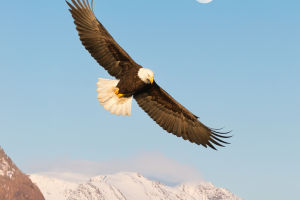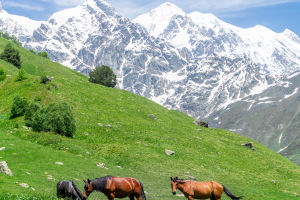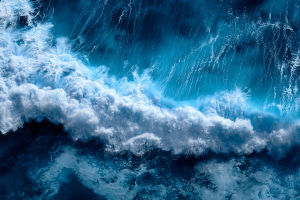Climate change poses one of the most urgent environmental challenges today, with wide-ranging effects on ecosystems and biodiversity.
While the direct effects of climate change—rising temperatures, extreme weather, and frequent disasters—are well known, its severe impact on wildlife is less understood.
From the Arctic to the tropics, the survival of countless species is now under threat. So, how exactly is climate change affecting animals, and what can be done to mitigate its damage?
The Disruption of Habitats
One of the most immediate effects of climate change is the alteration of habitats. Species around the world are adapted to very specific environmental conditions. However, rising temperatures and shifting precipitation patterns are rapidly changing these environments.
Similarly, coral reefs, which house a vast array of marine life, are experiencing mass bleaching events as ocean temperatures rise. This not only affects the coral itself but also the thousands of species that depend on these reefs for food and shelter. As water temperatures become increasingly unstable, many marine species find it difficult to survive, migrate, or reproduce.
Changes in Migration and Breeding Patterns
Climate change is also impacting the migration and breeding patterns of various species. Many animals—such as birds, butterflies, and sea turtles—follow migratory routes synchronized with environmental conditions like temperature and food availability.
As the climate warms, these migratory patterns are disrupted, with some species arriving too early or too late in their destination habitats.
For example, some migratory birds have been observed to arrive earlier in the spring than in previous years, in response to warming temperatures. However, this change in timing doesn't always coincide with the availability of food sources, leading to malnutrition and lower survival rates.
Impact on Food Availability
Climate change also affects the availability of food for various species. As ecosystems are altered, the plants and animals that form the foundation of the food chain are also affected. The shifting climate patterns disrupt the growth cycles of certain plants, which in turn affects herbivores that depend on them for sustenance.
In some cases, animals are forced to move further in search of food, or they become more vulnerable to predators.
In the ocean, ocean acidification—caused by an increased concentration of carbon dioxide—is impacting marine life at all levels. Species such as shellfish and plankton are particularly vulnerable, as the acidity weakens their shells and skeletons, causing a cascading effect throughout the food chain.
As a result, animals that depend on these species for food face growing challenges to their survival.
Endangered Species and Extinctions
The ongoing changes to ecosystems and food sources, along with habitat loss, have led to a significant increase in the number of species listed as endangered. According to the International Union for Conservation of Nature (IUCN), climate change is one of the top causes of biodiversity loss, contributing to the decline of species across all taxonomic groups.
Species that are already vulnerable due to other factors—such as deforestation, poaching, or overfishing—are even more at risk as climate change accelerates. Amphibians and reptiles, which are highly sensitive to environmental changes, are suffering from habitat destruction and changing weather patterns.
Mitigation and Conservation Efforts
Despite the daunting challenges posed by climate change, there are a number of conservation efforts underway to protect wildlife from its effects. One key strategy is the establishment of wildlife corridors—protected areas that allow animals to migrate and adapt to changing conditions.
These corridors help ensure that animals can move safely between habitats without the threat of human development or destruction of natural environments.
Additionally, many organizations are working to preserve and restore ecosystems that provide critical services to wildlife. For instance, efforts to conserve coral reefs, protect wetlands, and preserve forests help ensure that animals have access to their habitats in the face of climate change.
On a broader scale, addressing the root cause of climate change through reducing carbon emissions and promoting sustainable practices is essential to safeguarding wildlife. By transitioning to renewable energy sources, reducing deforestation, and curbing industrial emissions, we can reduce the pace of climate change and mitigate its negative effects on wildlife.
What Can You Do to Help?
While governments and organizations play an important role in combating climate change, individuals can also take action to protect wildlife. One of the most effective steps is to reduce your carbon footprint by conserving energy, using public transportation, and supporting sustainable practices in your daily life.
Additionally, donating to or volunteering with wildlife conservation organizations can help fund research and initiatives aimed at protecting endangered species.
By raising awareness about the impact of climate change on wildlife and supporting efforts to protect ecosystems, you can contribute to the survival of species around the world. Every small action counts when it comes to preserving the natural world for future generations.
Conclusion
The effects of climate change on wildlife are profound and far-reaching. From habitat destruction to food shortages, climate change is altering the delicate balance of ecosystems around the world.
However, through concerted conservation efforts and individual actions, we can help protect vulnerable species and ensure that future generations inherit a world rich in biodiversity. The urgency of addressing climate change cannot be overstated, as its consequences will continue to impact wildlife for decades to come. By acting now, we can protect the natural world and its inhabitants from irreversible harm.


